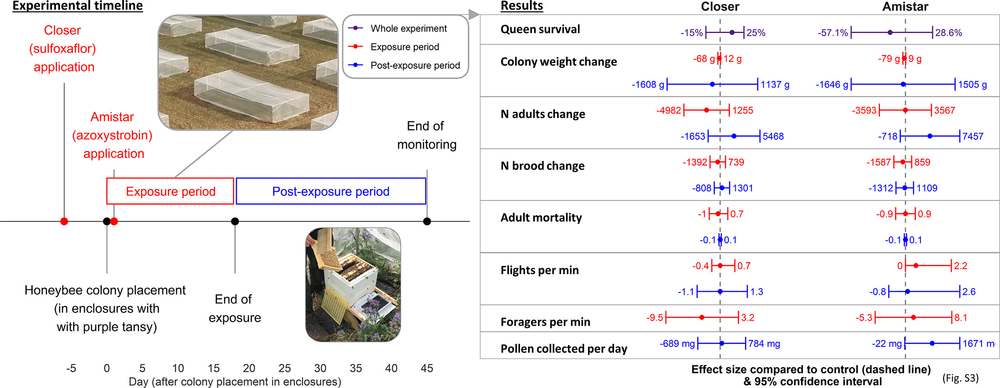pan-european assessment, monitoring, and mitigation of stressors on the health of bees
PoshBee Research: Semi-field study on the effects of sulfoxaflor and azoxystrobin on honeybees
A new PoshBee research article, published in the open access journal Science of the Total Environment studies the effects of sulfoxaflor insecticide and azoxystrobin fungicide on honeybees in a semi-field experiment with actual exposure. The article titled (Sulfoxaflor insecticide and azoxystrobin fungicide have no major impact on honeybees in a realistic-exposure semi-field experiment) presents the results of a peer-reviewed field realistic study.

Giovanni Tamburini, Dimitry Wintermantel, Matthew J. Allan, Robin R. Dean, Anina Knauer, Matthias Albrecht, Alexandra-Maria Klein, Sulfoxaflor insecticide and azoxystrobin fungicide have no major impact on honeybees in a realistic-exposure semi-field experiment, Science of The Total Environment, Volume 778, 2021, 146084, ISSN 0048-9697, https://doi.org/10.1016/j.scitotenv.2021.146084.
The PoshBee researchers and authors of the paper indicate that exposure to pesticides is considered a major threat to bees and several neonicotinoid insecticides were recently banned in cropland within the European Union in light of evidence of their potential detrimental effects. Nonetheless, bees remain exposed to many pesticides whose effects are poorly understood. Recent evidence suggests that one of the most prominent replacements of the banned neonicotinoids - the insecticide sulfoxaflor - harms bees, and that fungicides may have been overlooked as a driver of bee declines.
In this paper, the scientists assess the impact of the insecticide Closer (active ingredient: sulfoxaflor) and the widely used fungicide Amistar (a.i.: azoxystrobin) on honeybees through a peer-reviewed field-realistic semi-field study with 10 flight cages containing a honeybee colony.
The study findings suggest that these two pesticides pose no notable risk to honeybees when applied in isolation, following stringent label instructions. The findings on Closer indicate that a safety-period of 5–6 days between application and bloom, which is only prescribed in a few EU member states, may prevent its impacts on honeybees.
Researchers note that to conclude whether Closer and Amistar can safely be applied, further realistic-exposure studies should examine their effects in combination with other chemical or biological stressors on various pollinator species.
Read the full paper here.